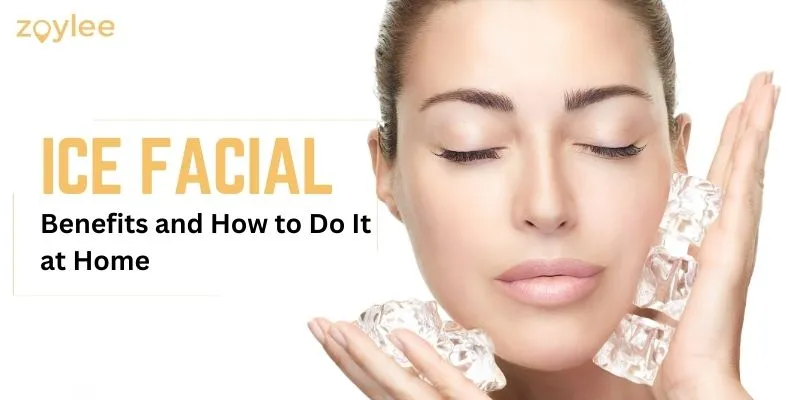An ice facial is a refreshing and natural way to rejuvenate your skin. It’s a simple and cost-effective beauty treatment that offers several benefits. Let’s dive into the step-by-step guide on how to do an ice facial at home, along with tips for the best results
What is an Ice Facial?
An ice facial, also known as cold therapy or skin icing, involves using ice or extremely cold temperatures on the face. This DIY skincare routine has been used for centuries to help reduce inflammation, tighten pores, and promote a healthy glow.
Benefits of ICE Facial
- Reduced Puffiness: The application of cold temperatures is known to constrict blood vessels and reduce inflammation. This is why ice facials are often used to reduce puffiness, particularly around the eyes. The constricted blood vessels help decrease fluid accumulation in the area, leading to a tighter, less puffy appearance.
- Minimized Appearance of Pores: Similar to how cold temperatures constrict blood vessels, they can also temporarily shrink pores. This is because the cold tightens the surrounding skin, making pores appear smaller and smoother. However, it’s important to note that this effect is temporary and pores will naturally return to their original size once the skin warms up.
- Soothed Irritated Skin: The cooling sensation from ice can help soothe irritation and reduce redness associated with conditions like sunburn, eczema, or allergic reactions. The cold temperature numbs the nerve endings, providing temporary relief from discomfort and itching.
- Potential for Reduced Oil Production: Some proponents of ice facials suggest that cold temperatures can decrease oil production. The rationale is that the constriction of blood vessels might also affect sebaceous glands, which produce oil. However, more research is needed to confirm this claim and its long-term effects.
- Glowing Skin: Some believe that ice facials can improve blood circulation due to the initial constriction followed by vasodilation (widening) of blood vessels as the skin warms up. This increased blood flow might deliver nutrients and oxygen to the skin cells, potentially contributing to a temporary “glow.”
Also Read: What Is a Wine Facial? Benefits, Drawbacks, and Everything
How to Do an Ice Facial at Home
- Cleanse: Wash your face with a gentle cleanser to remove dirt and oil.
- Wrap the Ice: Wrap a few ice cubes in a clean washcloth or soft fabric.
- Apply & Massage: Gently massage the wrapped ice cubes rubbing on your face in circular motions for 1-2 minutes, focusing on areas prone to puffiness or inflammation.
- Target Specific Areas: You can hold the ice cubes on specific areas for a few extra seconds, like under your eyes or around the jawline.
- Moisturize: After removing the ice, pat your face dry and apply a moisturizer suitable for your skin type.
Alternatives to Ice Facials
- Consider gentler methods like applying a cold compress wrapped in a washcloth or using chilled facial rollers.
- Ensure a consistent and balanced skincare routine that includes cleansing, moisturizing, and sun protection for long-term skin health.
- Consult a dermatologist if you have any concerns about your skin or are looking for personalized advice on improving its health.
Conclusion
Ice facials might offer some temporary benefits like reduced puffiness and soothed irritation, but their long-term effectiveness and potential risks require further research For overall skin health and a healthy glow, it’s essential to prioritize a balanced skincare routine and consult a dermatologist if needed.
